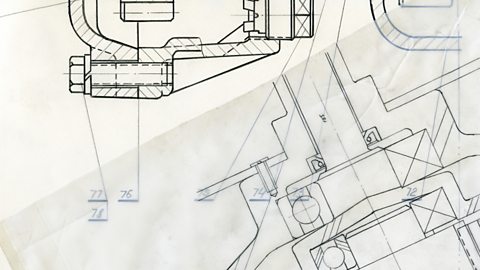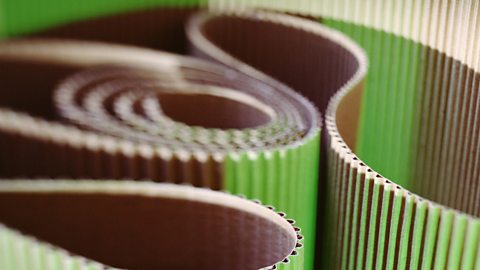Papers and boards
Types of papers and boards and their uses
Papers and boards are formed from wood pulp, which comes from trees. This squishy wood pulp is rolled out into thin sheets in paper mill factories to form the papers and boards that we use.
Paper
Papers are made from wood pulpWood fibres processed and reduced down with chemicals or mechanically broken down into smaller parts to make paper.. Their densityCompactness of a material. is measured by their weight, in grams per square metre (gsm). The lower the gsm, the thinner the paper will be. Paper comes in standard sized sheets - the smallest is A10 (roughly the size of a postage stamp), and the largest size is A0 (a large bed sheet). The most common sizes are A4 and A3.
| Paper | Properties | Uses |
| Tracing paper (40-90 gsm) | Thin, translucent (see-through), smooth and strong, doesnвҖҷt absorb ink easily and drying times are longer | For copying drawings, sketches and intricate details |
| Layout paper (50 gsm) | Smooth finish, translucent (see-through), cheap to buy | For sketching and developing design ideas |
| Copier paper (80 gsm) | Smooth surface, bright white (bleached) to show print clearly, uncoated surface, takes colour well, cheap and readily available | For printing and photocopying |
| Cartridge paper (80-140 gsm) | Thick, textured surface, usually creamy, off-white colour, heavier weight than copier paper | For all colour mediums, including ink and watercolour, crayons and pastels |
| Paper | Tracing paper (40-90 gsm) |
|---|---|
| Properties | Thin, translucent (see-through), smooth and strong, doesnвҖҷt absorb ink easily and drying times are longer |
| Uses | For copying drawings, sketches and intricate details |
| Paper | Layout paper (50 gsm) |
|---|---|
| Properties | Smooth finish, translucent (see-through), cheap to buy |
| Uses | For sketching and developing design ideas |
| Paper | Copier paper (80 gsm) |
|---|---|
| Properties | Smooth surface, bright white (bleached) to show print clearly, uncoated surface, takes colour well, cheap and readily available |
| Uses | For printing and photocopying |
| Paper | Cartridge paper (80-140 gsm) |
|---|---|
| Properties | Thick, textured surface, usually creamy, off-white colour, heavier weight than copier paper |
| Uses | For all colour mediums, including ink and watercolour, crayons and pastels |

Board
Board is categorised by weight as well as thickness; the weight is measured, like paper, in grams per square metre (gsm) and the thickness is measured in microns. One micron is 1/1,000th of a mm.
| Board | Properties | Uses |
| Corrugated card (3,000+ microns) | Strong but lightweight, made from two layers with at least two or more fluted (crimped) sheets between, available in different thicknesses, not water resistant, can be recycled | Corrugations make it strong, protective and insulating; used in packaging |
| Mounting board (1,400 microns) | Rigid with smooth surface, available in a range of colours (commonly black and white) | Picture framing mounts, production of architectural models, to support concept designs for presentations |
| Folding boxboard (300-1,600+ microns) | Often made from recycled paper, isnвҖҷt very thick but has good stiffness, can be easily recycled, scores well and bends without splitting | Packaging - particularly associated with packaging of goods found in a supermarket, eg frozen food boxes or cereal packets |
| Board | Corrugated card (3,000+ microns) |
|---|---|
| Properties | Strong but lightweight, made from two layers with at least two or more fluted (crimped) sheets between, available in different thicknesses, not water resistant, can be recycled |
| Uses | Corrugations make it strong, protective and insulating; used in packaging |
| Board | Mounting board (1,400 microns) |
|---|---|
| Properties | Rigid with smooth surface, available in a range of colours (commonly black and white) |
| Uses | Picture framing mounts, production of architectural models, to support concept designs for presentations |
| Board | Folding boxboard (300-1,600+ microns) |
|---|---|
| Properties | Often made from recycled paper, isnвҖҷt very thick but has good stiffness, can be easily recycled, scores well and bends without splitting |
| Uses | Packaging - particularly associated with packaging of goods found in a supermarket, eg frozen food boxes or cereal packets |
